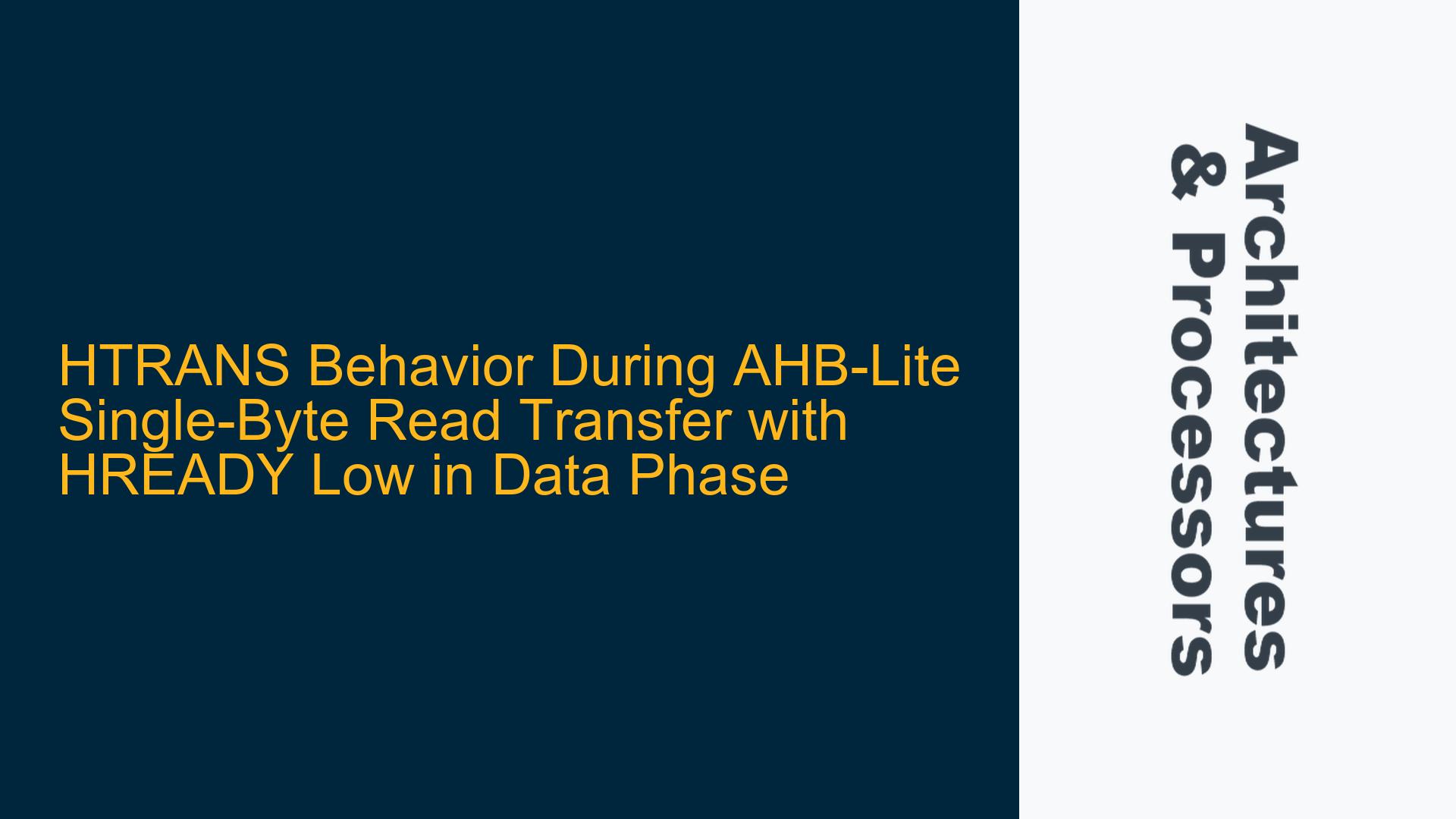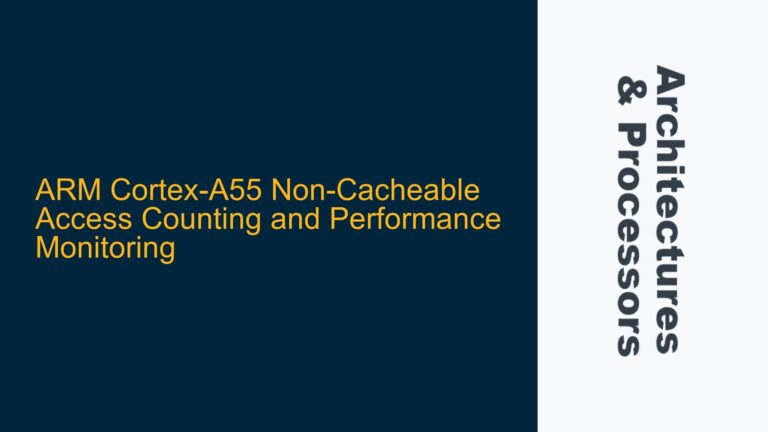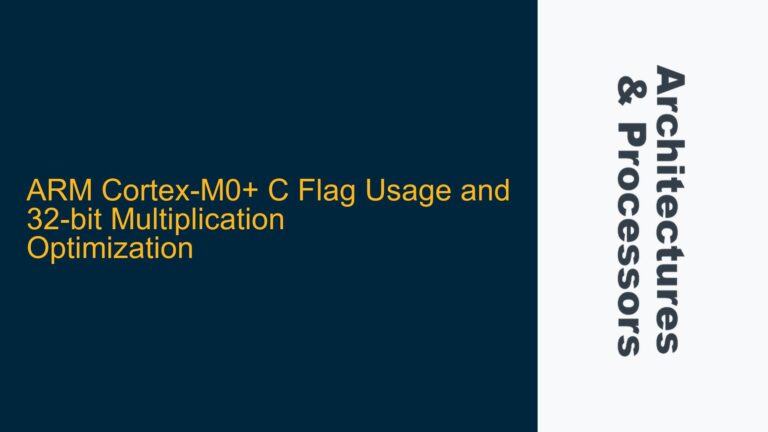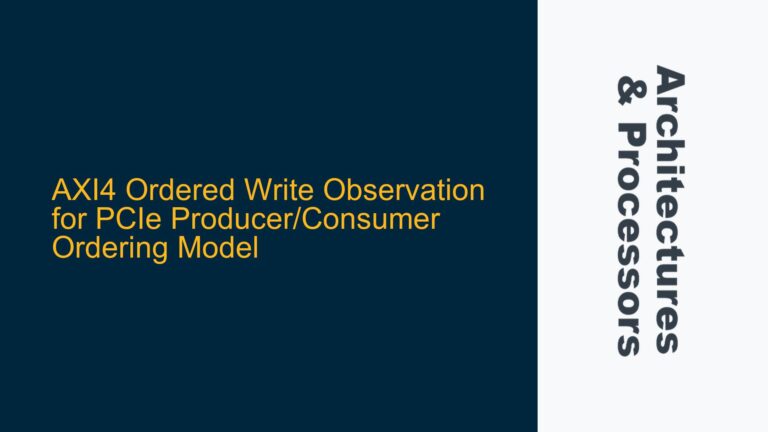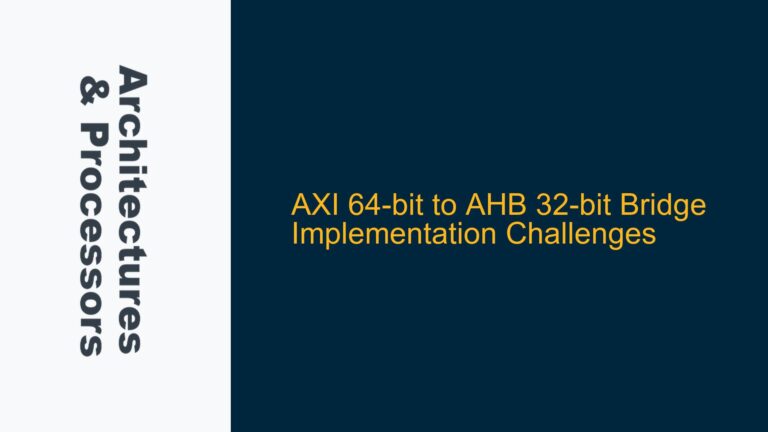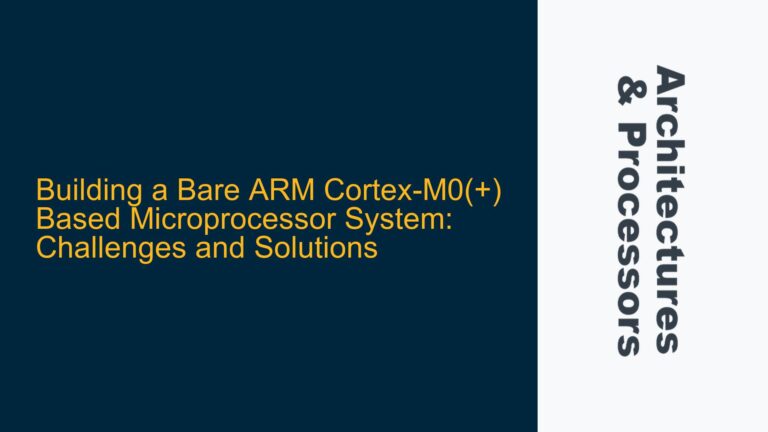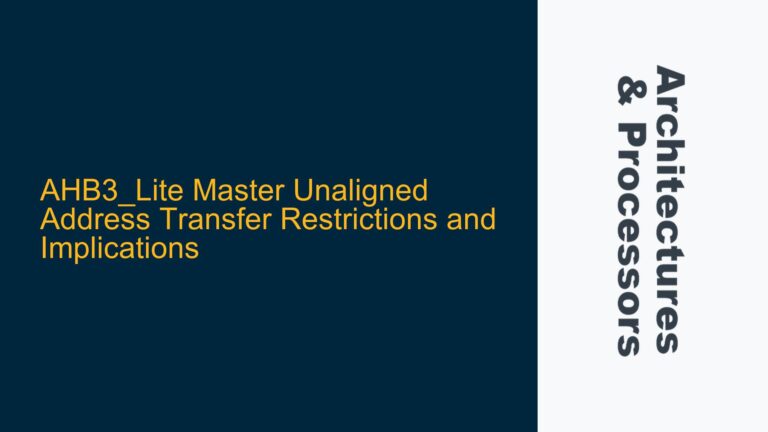AHB-Lite Single-Byte Read Transfer with HREADY Low in Data Phase
In the context of ARM AHB-Lite protocol, the behavior of the HTRANS signal during a single-byte read transfer when HREADY is low in the data phase is a critical aspect of ensuring correct bus operation. The AHB-Lite protocol defines a two-phase transfer mechanism: the address phase and the data phase. During the address phase, the master drives the HTRANS signal to indicate the type of transfer (e.g., NONSEQ for a non-sequential transfer). In the data phase, the slave responds with HREADY to indicate whether the transfer is complete or if additional wait states are required. When HREADY is low, the data phase is extended, and the master must correctly manage the HTRANS signal to maintain protocol compliance.
In a single-byte read transfer scenario, the master initiates the transfer by driving HTRANS to NONSEQ during the address phase. If the slave requires additional time to complete the transfer, it drives HREADY low during the data phase. The question arises as to what value the master should drive on HTRANS during the extended data phase. The correct behavior is to drive HTRANS to IDLE, indicating that no further transfers are pending. This ensures that the bus remains in a known state and prevents any unintended transfers from being initiated.
HTRANS Signal Management During Wait States in AHB-Lite Protocol
The management of the HTRANS signal during wait states in the AHB-Lite protocol is governed by the pipelined nature of the bus. The AHB-Lite protocol allows for pipelined transfers, where the address phase of one transfer can overlap with the data phase of the previous transfer. This pipelining is essential for achieving high bus utilization and performance. However, it also requires careful management of the HTRANS signal to ensure that the correct transfer type is signaled during the address phase of each transfer.
When a single-byte read transfer is initiated, the master drives HTRANS to NONSEQ during the address phase. If the slave requires additional time to complete the transfer, it drives HREADY low during the data phase. During this extended data phase, the master must drive HTRANS to IDLE, indicating that no further transfers are pending. This is because the master has only one transfer to perform, and once the address phase for that transfer is complete, there are no additional transfers to signal.
The AHB-Lite specification provides detailed timing diagrams that illustrate the pipelining of transfers and the relationship between the address and data phases. Figure 3-6 in the AHB-Lite specification, for example, shows how the address phase of one transfer overlaps with the data phase of the previous transfer. This diagram also illustrates how the HTRANS signal is driven during the address phase to indicate the type of the next transfer. In the case of a single-byte read transfer, the HTRANS signal should be driven to IDLE during the extended data phase to indicate that no further transfers are pending.
Implementing Correct HTRANS Behavior in AHB-Lite Single-Byte Read Transfers
To implement the correct HTRANS behavior in AHB-Lite single-byte read transfers, the master must follow the protocol’s requirements for signaling transfer types during the address and data phases. The master should drive HTRANS to NONSEQ during the address phase of the single-byte read transfer. If the slave requires additional time to complete the transfer, it will drive HREADY low during the data phase. During this extended data phase, the master must drive HTRANS to IDLE to indicate that no further transfers are pending.
This behavior ensures that the bus remains in a known state and prevents any unintended transfers from being initiated. It also ensures that the slave can correctly interpret the HTRANS signal and respond appropriately. If the master were to drive HTRANS to NONSEQ during the extended data phase, the slave might interpret this as a request for another transfer, leading to incorrect bus behavior.
In addition to driving HTRANS to IDLE during the extended data phase, the master must also ensure that all other control signals are managed correctly. For example, the HADDR signal should remain stable during the extended data phase, and the HWRITE signal should continue to indicate the type of transfer (read or write). The master should also monitor the HREADY signal to determine when the transfer is complete and the data phase can be terminated.
The correct management of the HTRANS signal during single-byte read transfers is essential for ensuring the proper operation of the AHB-Lite bus. By following the protocol’s requirements and driving HTRANS to IDLE during the extended data phase, the master can ensure that the bus remains in a known state and that the slave can correctly interpret the transfer request. This behavior is critical for maintaining the integrity of the bus and ensuring that all transfers are completed correctly.
Detailed Analysis of HTRANS Signal Behavior in AHB-Lite Protocol
The behavior of the HTRANS signal in the AHB-Lite protocol is a critical aspect of ensuring correct bus operation. The HTRANS signal is used by the master to indicate the type of transfer during the address phase. The AHB-Lite protocol defines several transfer types, including IDLE, BUSY, NONSEQ, and SEQ. Each of these transfer types has a specific meaning and is used in different scenarios.
In the case of a single-byte read transfer, the master drives HTRANS to NONSEQ during the address phase. This indicates that the transfer is a non-sequential transfer, meaning that it is not part of a burst or sequence of transfers. The slave then responds with HREADY during the data phase to indicate whether the transfer is complete or if additional wait states are required.
When HREADY is low during the data phase, the transfer is extended, and the master must correctly manage the HTRANS signal to maintain protocol compliance. The correct behavior is to drive HTRANS to IDLE during the extended data phase, indicating that no further transfers are pending. This ensures that the bus remains in a known state and prevents any unintended transfers from being initiated.
The AHB-Lite specification provides detailed timing diagrams that illustrate the correct behavior of the HTRANS signal during different transfer scenarios. These diagrams show how the HTRANS signal is driven during the address phase to indicate the type of the next transfer and how it should be managed during the data phase when HREADY is low.
In addition to the timing diagrams, the AHB-Lite specification also provides detailed descriptions of the different transfer types and their usage. For example, the IDLE transfer type is used to indicate that no transfer is being requested, while the NONSEQ transfer type is used to indicate a non-sequential transfer. The BUSY transfer type is used to insert wait states in a burst transfer, and the SEQ transfer type is used to indicate a sequential transfer in a burst.
Understanding the correct usage of these transfer types is essential for ensuring the proper operation of the AHB-Lite bus. By following the protocol’s requirements and driving HTRANS to IDLE during the extended data phase of a single-byte read transfer, the master can ensure that the bus remains in a known state and that the slave can correctly interpret the transfer request.
Practical Considerations for HTRANS Signal Management in AHB-Lite Designs
In practical AHB-Lite designs, the management of the HTRANS signal requires careful consideration of the protocol’s requirements and the specific design constraints. The master must ensure that the HTRANS signal is driven correctly during both the address and data phases of each transfer. This includes driving HTRANS to the appropriate transfer type during the address phase and managing the signal during the data phase when HREADY is low.
One common issue that can arise in AHB-Lite designs is the incorrect management of the HTRANS signal during extended data phases. If the master does not drive HTRANS to IDLE during the extended data phase of a single-byte read transfer, the slave may interpret the signal as a request for another transfer. This can lead to incorrect bus behavior and potentially cause the system to fail.
To avoid this issue, the master must be designed to correctly manage the HTRANS signal during all phases of the transfer. This includes monitoring the HREADY signal to determine when the transfer is complete and driving HTRANS to IDLE during the extended data phase when no further transfers are pending.
In addition to managing the HTRANS signal, the master must also ensure that all other control signals are managed correctly. For example, the HADDR signal should remain stable during the extended data phase, and the HWRITE signal should continue to indicate the type of transfer (read or write). The master should also ensure that the data signals (HRDATA or HWDATA) are managed correctly during the data phase.
Another practical consideration is the use of simulation and verification tools to validate the correct behavior of the HTRANS signal. Simulation tools can be used to create testbenches that simulate different transfer scenarios and verify that the HTRANS signal is driven correctly. Verification tools can be used to check that the design meets the protocol’s requirements and that the HTRANS signal is managed correctly in all scenarios.
By carefully considering these practical aspects of HTRANS signal management, designers can ensure that their AHB-Lite designs operate correctly and meet the protocol’s requirements. This includes driving HTRANS to IDLE during the extended data phase of single-byte read transfers and ensuring that all other control signals are managed correctly.
Conclusion
The correct management of the HTRANS signal in AHB-Lite designs is essential for ensuring the proper operation of the bus. In the context of a single-byte read transfer, the master must drive HTRANS to NONSEQ during the address phase and to IDLE during the extended data phase when HREADY is low. This ensures that the bus remains in a known state and prevents any unintended transfers from being initiated.
By following the protocol’s requirements and carefully managing the HTRANS signal, designers can ensure that their AHB-Lite designs operate correctly and meet the protocol’s requirements. This includes using simulation and verification tools to validate the correct behavior of the HTRANS signal and ensuring that all other control signals are managed correctly.
In summary, the correct behavior of the HTRANS signal during a single-byte read transfer with HREADY low in the data phase is to drive HTRANS to IDLE. This ensures that the bus remains in a known state and that the slave can correctly interpret the transfer request. By following this behavior, designers can ensure that their AHB-Lite designs operate correctly and meet the protocol’s requirements.
